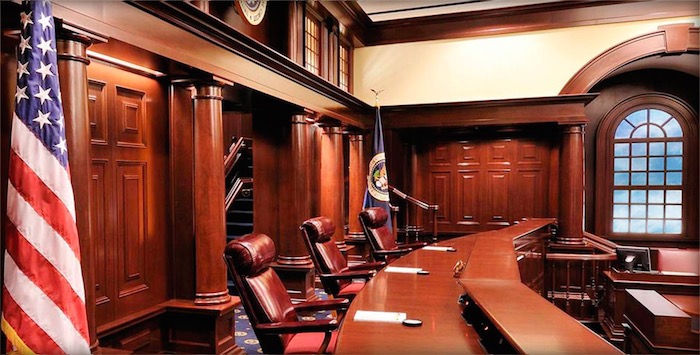CAFC Affirms Obviousness of Memory Cell Design Patents Over Dyk Dissent
“[Judge] Dyk noted that the ‘single local interconnect layer’ limitation of claim 8 was added during reexamination to overcome obviousness issues with a prior art reference that similarly did not disclose a lateral routing construction.”
On October 26, a panel majority of the U.S. Court of Appeals for the Federal Circuit (CAFC) affirmed a pair of final written decisions at the Patent Trial and Appeal Board (PTAB) invalidating patent claims owned by Monterey Research and covering improved static random access memory (SRAM) cell designs. Dissenting from the majority was Circuit Judge Timothy Dyk, who believed that both the Board and CAFC panel majority erred by concluding that claim amendments made during reexamination did not differentiate the claims from asserted prior art references.
Monterey Research appealed from the PTAB following the invalidation of all challenged claims of U.S. Patent No. 6535805, SRAM Cell Design. The ‘805 patent protects a memory cell having multiple layers of circuit components that are connected within a circuit by local interconnects. During reexamination of the ‘805 patent at the USPTO, the patent owner added a limitation to claim 8 in order to distinguish a prior art reference: “a single local interconnect layer comprising local interconnects corresponding to bitlines and a global wordline.”
Neither Claim Language nor Figure 3 Restricts Scope to Lateral Signal Routing
During inter partes review (IPR) proceedings at the PTAB, Monterey Research argued that the amendments made to disputed claim 8 required that signals be routed laterally along local interconnects. Although the Board acknowledged that Figure 3 of the ‘805 patent depicted an embodiment of the disputed claim limitation showing the lateral routing of signals as argued by Monterey, neither the specification nor the claims of the ‘805 patent limited the disputed claim’s scope to lateral routing. The Board found the prosecution history did not disclaim any specific routing of signals among local interconnects, even though the claim limited the local interconnects corresponding to bitlines and global wordlines to a single layer of the memory cell.
On appeal, the Federal Circuit affirmed the PTAB’s finding that representations made by the applicant during patent prosecution did not restrict the disputed claim limitation to Figure 3 of the ‘805 patent. While the Federal Circuit agreed with Monterey that the applicant disclaimed local interconnects distributed across multiple layers of the memory cell, patent prosecution statements did not require that the local interconnects provide connections between “laterally displaced” components such that signals would have to be horizontally routed.
Even if the disputed “single local interconnect layer” claim term were limited to Figure 3, the Federal Circuit majority found that the figure did not restrict the claim as argued by Monterey. The patent figure only depicts one contact region for the local interconnects, leaving it ambiguous as to whether the second contact region associated with the local interconnects required lateral and not vertical routing.
Judge Dyk: PTAB Ruling Established Connections Among ‘Laterally Displaced’ Components
Judge Dyk concurred with the majority’s separate finding that the asserted prior art reference disclosed the general shapes of claimed parallel active regions of the ‘805 patent. However, Dyk noted that the “single local interconnect layer” limitation of claim 8 was added during reexamination to overcome obviousness issues with a different prior art reference that similarly did not disclose a lateral routing construction. In amending claim 8, the patent owner contrasted the single layer of local interconnects claimed by the ‘805 patent to local interconnects running across multiple layers as disclosed by the prior art. Dyk further pointed to statements by the patentee tying the amendment to Figure 3, indicating that the patentee relied on the figure to differentiate the ‘805 patent from prior art issues identical to those in the present appeal.
Judge Dyk also disagreed with the panel majority’s finding that Figure 3 was not limited to the lateral routing construction argued by Monterey Research. The language of the PTAB’s final written decision established that Figure 3 illustrated a routing scheme that connected “laterally displaced bitlines and wordlines.” Rather than hold that Figure 3 was not limited to the lateral routing construction, the PTAB held that the claim language and specification did not limit the disputed claim’s scope to the embodiment of Figure 3, according to Dyk. Therefore, amendments limiting the scope of the disputed claim term to the embodiment in Figure 3 necessarily limited the claim’s scope to an embodiment connecting laterally displaced components.
Steve Brachmann
Steve Brachmann is a graduate of the University at Buffalo School of Law, having earned his Juris Doctor in May 2022 and served as the President of the Intellectual Property […see more]







